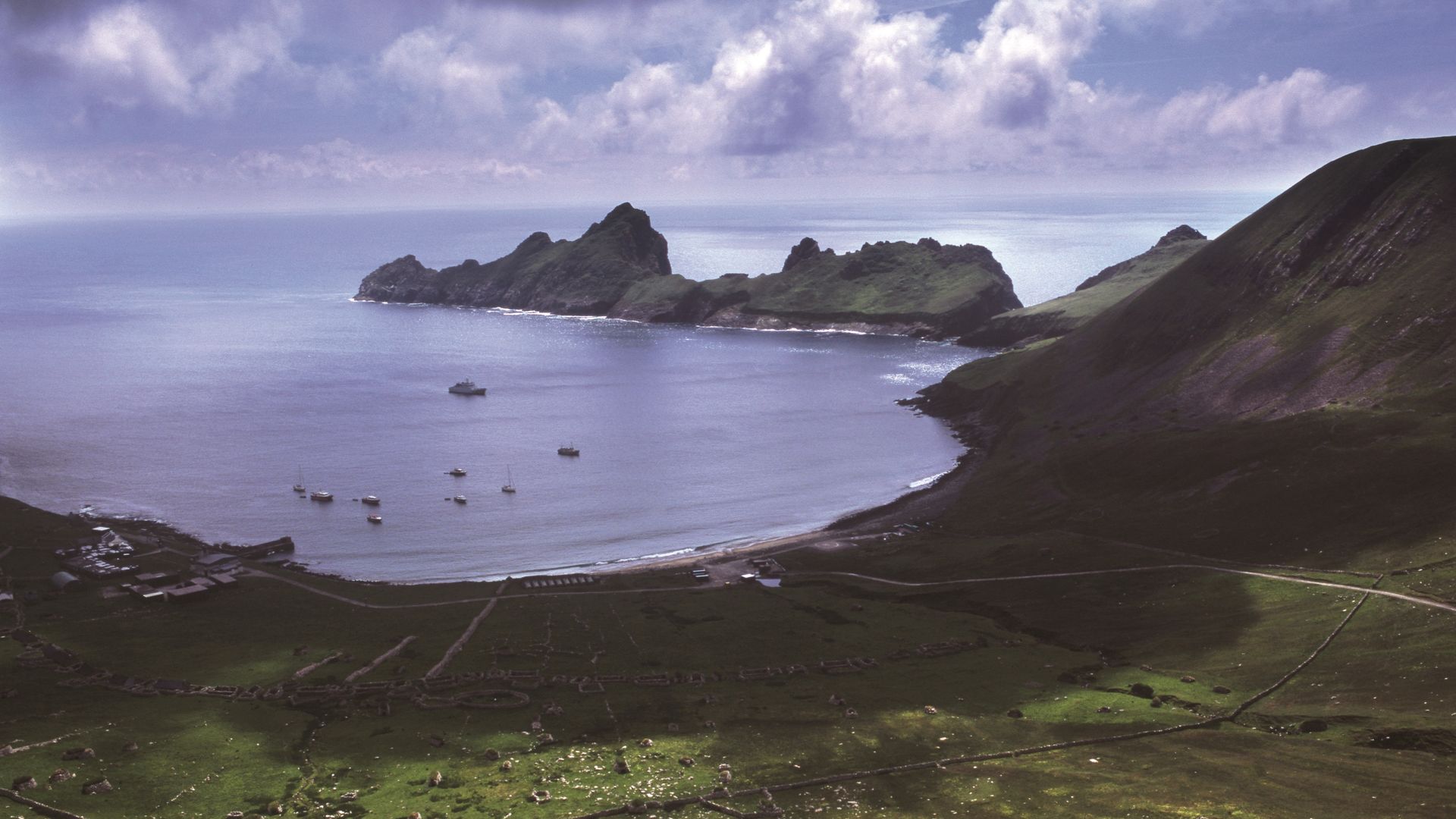A new study has identified the three biggest climate change threats to the UK’s only dual World Heritage Site.
St Kilda – 40 miles west of the Western Isles of Scotland – is home to thousands of seabirds, including one of the world’s largest colonies of northern gannets (approximately 24% of the global population).
The natural elements of the remote archipelago – the sea, the islands and the towering sea stacks – collectively form the most important seabird breeding area in northwest Europe.
It is home to the UK’s largest colony of Atlantic puffins and fulmars, as well as unique sub-species of mouse and wren.
A new report has now identified that rising land and sea temperatures, more frequent and severe storms, and changes to the ocean currents pose the greatest risks to St Kilda’s natural heritage.
National Trust for Scotland (NTS), which manages the site, said it was already seeing the negative effects of rising temperatures.
Susan Bain, NTS property manager for St Kilda, said: “Warming sea temperatures are already impacting on the food chain for the hundreds of thousands of seabirds who breed here each summer, and some species are at risk of disappearing from St Kilda forever.
“Changing currents could compound this even further, fundamentally changing the habitats and with that the types of birds that can thrive here.”
St Kilda has not had a permanent population since 1930.
The Ministry of Defence built a military base on the main island of Hirta in the 1950s.
Today, the only year-round residents are personnel stationed at the military base. They share St Kilda with a variety of conservation workers, volunteers and scientists who spend time on the islands monitoring the wildlife and undertaking conservation work on the many ruined buildings left behind by the original St Kildans.
Keep up with all the latest news from the UK and around the world by following Sky News
The archipelago was first recognised by UNESCO in 1986 for its natural importance, which was extended in 2004 to include its unique marine life. It was also designated in 2005 for its cultural heritage.
The report’s researchers looked for climate change threats using an assessment tool called the Climate Vulnerability Index (CVI).
The CVI has been adopted as a standard tool for assessing the predicted changes to climate at World Heritage Sites.
This is the first time the method has been applied to a place designated for both its natural and cultural significance.
Click to subscribe to ClimateCast with Tom Heap wherever you get your podcasts
A 2023 count of four seabird species suggested numbers at St Kilda had declined overall by 61%. Fulmars in particular had declined by 70%.
Ms Bain said: “We have certainly been experiencing the effects of climate change on St Kilda for decades, with the impacts on some of the seabird species and marine habitats being particularly profound.
“This report tells us that in the future we will have more and more challenges to manage, and it will be increasingly difficult to do so.
“The risk of increasingly ferocious and frequent storms not only puts the unique built heritage of St Kilda at risk of more damage, but also makes it practically more difficult to get our dedicated staff and volunteers out there to carry out our vital conservation work.
“It will potentially make St Kilda even more challenging for tourists to visit than at present.”
Be the first to get Breaking News
Install the Sky News app for free
CVI assessments have been applied to world heritage properties in 15 countries.
In Scotland, Historic Environment Scotland (HES) and Australia’s James Cook University have used the tool to examine the vulnerability of neolithic heritage in Orkney, Edinburgh’s Old and New Towns and the Roman Antonine Wall.
Dr Mairi Davies, climate change policy manager at HES, said: “The results align with what we are seeing across Scottish heritage properties, which is that climate change and extreme weather are speeding up the deterioration of natural and cultural heritage.
“It is becoming increasingly clear that action must be taken on every level, and research projects such as the one conducted on St Kilda give us a clearer picture of what is needed to address loss and damage and adapt to the changing climate.”







